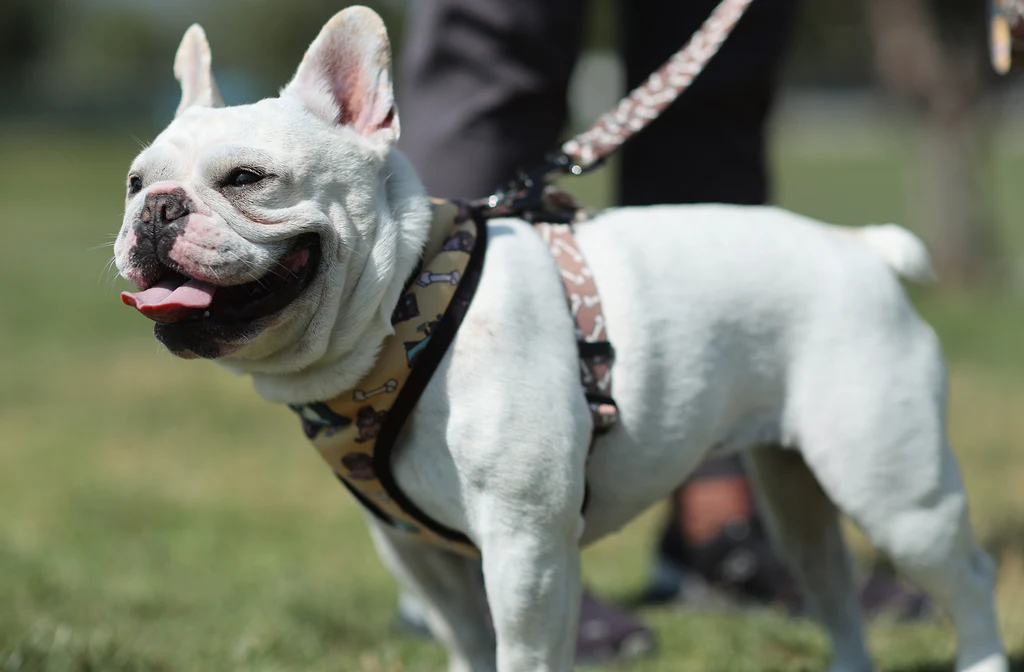When it comes to pet ownership, ensuring the safety and comfort of your dog is a top priority. One of the essential tools for responsible pet care—especially when it comes to walking dogs—is the dog harness. While traditional collars have been widely used for decades, many pet owners and professionals now recommend harnesses as a safer and more effective alternative. Whether you’re walking your dog around the block or taking them on adventurous hikes, a dog harness can make a significant difference in both control and safety.
In this article, we explore the importance of using a dog harness, the benefits it offers for pet safety, and how it improves the overall experience of walking dogs.
What Is a Dog Harness?
A dog harness is a piece of equipment that fits around a dog’s chest, shoulders, and back. Unlike a collar that wraps around the neck, a harness distributes pressure more evenly across the body. It comes in various styles and materials, such as front-clip, back-clip, dual-clip, and no-pull designs, each tailored to different dog sizes, breeds, and behavior types.
1. Enhanced Control While Walking Dogs
One of the main reasons dog owners switch to a harness is for better control. A dog harness offers more points of contact, making it easier to guide and manage your dog’s movements, especially if they tend to pull on the leash.
With a harness, the leash attachment is typically at the front (chest) or back (shoulder blades), which gives the owner the ability to steer the dog more efficiently without causing discomfort. This is particularly helpful when walking dogs that are energetic, excitable, or not fully leash-trained.
2. Improved Pet Safety
Pet safety is arguably the most critical reason for choosing a dog harness over a collar. Here’s how a harness protects your dog:
a. Prevents Neck Injuries
Traditional collars can put strain on your dog’s neck and trachea, especially if they pull suddenly or if you’re trying to control their movement by tugging on the leash. This can lead to choking, coughing, or more serious injuries like collapsed tracheas, particularly in small or brachycephalic breeds like Pugs or Shih Tzus.
In contrast, a dog harness distributes the pulling force across the chest and shoulders, significantly reducing the risk of neck injury.
b. Reduces the Risk of Escaping
Some dogs are notorious escape artists who can slip out of their collars in seconds. A well-fitted dog harness is much harder to escape from, ensuring that your pet remains secure during walks, training sessions, or trips to busy places like the vet or groomer.
c. Helps in Emergency Situations
A harness provides better grip and leverage if you ever need to quickly pull your dog out of danger—whether it’s traffic, aggressive animals, or hazardous environments. Some harnesses come with handles on the back, offering extra control and fast response in urgent situations.
3. Supports Training and Behavior Correction
Using a dog harness is an effective tool for leash training and behavior correction. Certain harness types, such as front-clip or no-pull harnesses, gently redirect a dog’s forward motion to the side when they try to pull. This discourages pulling without causing pain or stress.
Over time, dogs learn to walk calmly beside their owners, making walks more pleasant for both parties. This is especially helpful for puppies or newly adopted dogs that are still learning leash manners.
4. Comfort for Your Dog
Comfort is another key benefit of using a harness. Harnesses are designed to fit the natural contours of a dog’s body, reducing pressure points and minimizing the risk of chafing or skin irritation.
Modern harnesses are made from breathable materials like mesh, padded nylon, or soft cotton, which help keep your dog cool and comfortable—even on longer walks or during warm weather.
Moreover, for dogs with medical conditions such as arthritis, spinal issues, or previous injuries, a harness provides a more ergonomic option that avoids putting strain on sensitive areas.
5. Better for Specific Breeds and Sizes
Certain breeds benefit more from wearing harnesses than collars due to their anatomy or behavior. For example:
- Brachycephalic breeds (like Bulldogs, Pugs, and Boston Terriers) are prone to breathing issues. A harness avoids putting pressure on their already sensitive airways.
- Small dogs (like Chihuahuas or Yorkies) often have fragile necks, making collars risky.
- Large or strong dogs (like Huskies or German Shepherds) require more control during walks. A harness gives you better leverage without hurting the dog.
Additionally, harnesses come in a wide range of adjustable sizes, making it easier to find a snug fit for your dog’s specific build.
6. Ideal for Active and Elderly Dogs
If you enjoy running, hiking, or biking with your dog, a dog harness provides the stability and control needed for high-energy activities. The design ensures your dog can move freely without risking injury.
For elderly dogs or dogs with mobility issues, special harnesses can help lift and support their weight when walking or getting into cars. These supportive harnesses act like slings, giving pet owners the ability to assist without straining their own backs—or the dog’s.
7. Safer Car Travel
Car safety is another overlooked aspect of pet safety. Many dog harnesses are designed to be used with seat belts, preventing your dog from moving around or being thrown in case of sudden stops. This not only protects your dog but also minimizes distraction for the driver.
Some travel harnesses are crash-tested, providing additional assurance for pet owners who regularly take their dogs on road trips.
Choosing the Right Dog Harness
When selecting a dog harness, consider the following:
- Fit: Measure your dog’s chest and neck to ensure a snug, comfortable fit. A loose harness can lead to chafing or escape, while a tight one can restrict movement.
- Material: Look for breathable, durable, and lightweight materials.
- Type: Choose based on your dog’s size, breed, and behavior. For example:
- Front-clip: Good for training and pullers.
- Back-clip: Ideal for well-behaved walkers.
- Dual-clip: Offers flexibility.
- Step-in: Easy for squirmy dogs.
- Padding: Helps avoid chafing, especially for short-haired breeds.
Final Thoughts
Switching to a dog harness can be a game-changer for both you and your dog. It promotes pet safety, improves comfort, and provides better control, especially during walks or training. As more pet owners prioritize their dog’s well-being, the harness has become a staple tool for responsible dog ownership.


